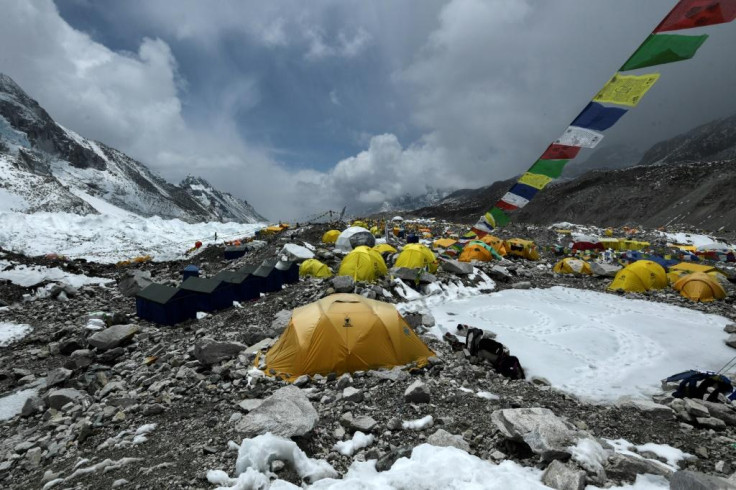Three climbers missing on Everest as avalanche hits Khumbu Icefall
The authorities believe that the chances of rescuing the three climbers alive are "very slim."

Three Sherpa guides have gone missing after an avalanche hit Mount Everest on Wednesday. They fell into a deep crevasse between Camp 1 and the base camp of Mt. Everest.
According to local authorities, the Sherpas were carrying expedition logistics when the incident occurred. The avalanche hit the Southeast Ridge route to the summit. The three were part of the 25-member team that was climbing above the Khumbu Icefall when a massive ice sheet hit them.
The three of them have been identified by base camp officials as Pemba Tenzing Sherpa, Lakpa Rita Sherpa, and Dachhiri Sherpa from Thame village in Khumbu, per The Himalayan Times.
"Search and rescue operation is still underway by a combined team of Imagine Nepal, Himalayan Rescue (HRA) Nepal and the Sagarmatha Pollution Control Committee (SPCC)," Yuvraj Khatiwada, director of the mountaineering branch at the Department of Tourism told the publication.
According to the Everest base camp coordinator of the Himalayan Rescue Association, Lakpa Norbu Sherpa, the possibility of finding the three climbers alive is "very slim."
A climber captured the devastating moment when the avalanche came crashing down on Khumbu icefall on Mount Everest. 3 local climbers who fix the ropes and lay bridges ahead of the climbing season, are believed to have perished pic.twitter.com/62z9fNjr0j
— Jehangir Ali (@Gaamuk) April 12, 2023
"They are buried five to six metres underneath," said Lakpa Norbu Sherpa. The latest disaster is the first such incident during this year's climbing season. Khumbu Icefall is considered the deadliest passageway to Everest's summit on the South Col route, which is the comparatively easier route up the mountain.
Khumbu Icefall, or the river of ice, is located at the Khumbu Glacier at about 18,000 feet on the slopes of Everest. The icefall has deep crevasses on its surface and fast-moving ice that makes the crevasses open or close in less than a day.
Fast-moving glaciers mean ice can break off at any moment, causing avalanches that threaten the lives of climbers several thousand feet below. The fear and uncertainty because of the Khumbu Icefall, which is the only way to reach the South Col route, are always there. The icefall has claimed several lives since 1963. Most were killed in avalanches, according to officials.
Sometimes people are forced to cancel their climb midway because of the dangers associated with the Icefall. In 2014, an avalanche killed 16 sherpa guides in the Khumbu Icefall. The incident forced the authorities to cancel the expeditions that year.
Nepal is home to some of the world's tallest mountains, including the mighty Mount Everest. It is famous for its beautiful trekking regions. Mountain climbing and tourism are two of the main sources of income for Nepal.
Every year, a number of people try to ascend Nepal's lofty and dangerous peaks, but only a few succeed. Several people have lost their lives over the years trying to scale these mountains, including the mighty Mount Everest. It is reported that at least 300 climbers have lost their lives on the mountain.
According to the Nepal Tourism Board (NTB), more than 171,000 visitors went trekking in the country in 2019, and as many as 27 percent of them chose to go trekking without a guide or a porter. However, scaling Everest is no minor feat. It is one of the most dangerous peaks to scale because one is always at the mercy of nature during the journey to the highest summit in the world.
In 2015, an earthquake of magnitude 7.8 triggered a massive avalanche on Everest, leading to the deaths of 22 people.
The mountain even has a region above 26,000 feet called the "Death Zone," where all but the most experienced climbers need to breathe fresh oxygen from canisters. But even experienced climbers sometimes need their oxygen bottles.
Hundreds of dead bodies remain in the ice on the mountain's side. However, no one exactly knows how many dead bodies remain on the highest peak, which reaches a height of 8,848m (29,029 ft), but it is certain that the number is more than 200.
© Copyright IBTimes 2025. All rights reserved.





















